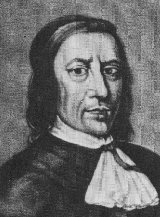
Marmaduke Langdale, 1st Baron Langdale was an English landowner and soldier who fought with the Royalists during the Wars of the Three Kingdoms.

Duke of Atholl, named after Atholl in Scotland, is a title in the Peerage of Scotland held by the head of Clan Murray. It was created by Queen Anne in 1703 for John Murray, 2nd Marquess of Atholl, with a special remainder to the heir male of his father, the 1st Marquess.

Robert Darcy, 4th Earl of Holderness,, known before 1721 as Lord Darcy and Conyers, was a British diplomat and politician.

Marquess Townshend is a title in the Peerage of Great Britain held by the Townshend family of Raynham Hall in Norfolk. The title was created in 1787 for George Townshend, 4th Viscount Townshend.

Earl of Cardigan is a title in the Peerage of England, currently held by the Marquesses of Ailesbury, and used as a courtesy title by the heir apparent to that Marquessate, currently David Brudenell-Bruce, Earl of Cardigan, son of the 8th Marquess. The Brudenell family descends from Sir Robert Brudenell, Chief Justice of the Common Pleas from 1520 to 1530. His great-grandson, Sir Thomas Brudenell, was created a Baronet in the Baronetage of England, styled "of Deene in the County of Northampton", on 29 June 1611. On 26 February 1628, he was raised to the Peerage of England as Baron Brudenell, of Stanton Wyvill in the County of Leicester, and on 20 April 1661 he was further honoured when he was made Earl of Cardigan, also in the Peerage of England. On his death, the titles passed to his son, Robert, the 2nd Earl, and on the 2nd Earl's death to his grandson, George, the 3rd Earl, the 2nd Earl's only son, Francis, Lord Brudenell, having predeceased his father.
Baron Darcy de Knayth is a title in the Peerage of England. It was created in 1332 for John Darcy with remainder to his heirs general, allowing daughters to inherit.

Baron Stafford, referring to the town of Stafford, is a title that has been created several times in the Peerage of England. In the 14th century, the barons of the first creation were made earls. Those of the fifth creation, in the 17th century, became first viscounts and then earls. Since 1913, the title has been held by the Fitzherbert family.

Baron Strange is a title which has been created four times in the Peerage of England. Two creations, one in 1295 and another in 1326, had only one holder each, upon whose deaths they became extinct. Two of the creations, that of 1299 and that of 1628, are extant. The surname Le Strange was Latinized as Extraneus. The arms of Le Strange of Knockin Castle in Shropshire were: Gules, two lions passant argent.

Earl of Dartrey, of Dartrey in the County of Monaghan, was a title in the Peerage of the United Kingdom. It was created in July 1866 for The 3rd Baron Cremorne.

Earl of Seaforth was a title in the Peerage of Scotland and the Peerage of Ireland, derived from Loch Seaforth on the coast of Lewis. It was held by the family of Mackenzie from 1623 to 1716, and again from 1771 to 1781.

Earl of Peterborough was a title in the Peerage of England. It was created in 1628 for John Mordaunt, 5th Baron Mordaunt. He was succeeded by his eldest son, Henry, the second Earl. He was a soldier and courtier. Lord Peterborough had two daughters but no sons. He was succeeded in the barony of Mordaunt by his daughter, Mary, 7th Baroness. The earldom was passed on to his nephew, Charles Mordaunt, 1st Earl of Monmouth, who became the third Earl. He was a prominent soldier and politician. In 1705 he also succeeded his cousin Mary in the barony of Mordaunt. His eldest son John Mordaunt, Viscount Mordaunt, predeceased him, and Lord Peterborough was consequently succeeded by his grandson, Charles, the fourth Earl. The barony of Mordaunt, the viscountcy of Mordaunt and the earldoms of Peterborough and Monmouth, became extinct on the death of the latter's son, the fifth Earl, in 1814. The barony of Mordaunt was passed on to his half-sister, Lady Mary Anastasia Grace Mordaunt.
Earl of Glandore, in the County of Kerry, was a title in the Peerage of Ireland. It was created in 1776 for the Irish politician William Crosbie, 2nd Baron Brandon.

Holme-on-Spalding-Moor is a large village and civil parish in the East Riding of Yorkshire, England. It is situated approximately 7 miles (11 km) north-east of Howden and 5 miles (8 km) south-west of Market Weighton. It lies on the A163 road where it joins the A614 road.
Baron Holmes was a title that was created twice in the Peerage of Ireland. The first creation came on 11 September 1760 when the politician Thomas Holmes was made Baron Holmes, of Kilmallock in the County of Limerick. The title became extinct on his death on 21 July 1764. The second creation came on 6 November 1797 when Leonard Holmes was made Baron Holmes, of Kilmallock in the County of Limerick. He was the nephew of the first Baron of the 1760 creation. The title became extinct on his death on 18 January 1804.
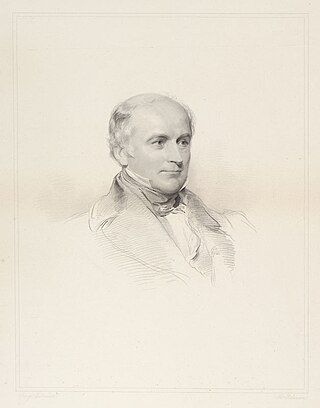
Henry Bickersteth, 1st Baron Langdale, PC, a member of the prominent Bickersteth family, was an English physician, law reformer, and Master of the Rolls.
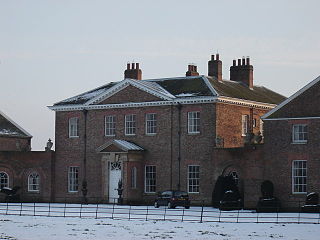
Houghton Hall, Sancton, near Market Weighton, is a Grade I listed Georgian country mansion in the East Riding of Yorkshire, England, set in an estate of 7,800 acres (32 km2). Located on the estate is the village of Sancton and the vestigial remains of the ancient hamlet of Houghton. It was built c. 1765–8 by Philip Langdale to the designs of Thomas Atkinson and underwent minor remodelling in 1960 by Francis Johnson. It is built in pink brick with stone dressing and slate roof, with a three-storey, 5-bay main block.

Charles Langdale ; 19 September 1787 – 1 December 1868) was a British politician and biographer. He served as Whig Member of Parliament, wrote the memoirs of Maria Fitzherbert, and was a leading Roman Catholic figure during the 19th century.
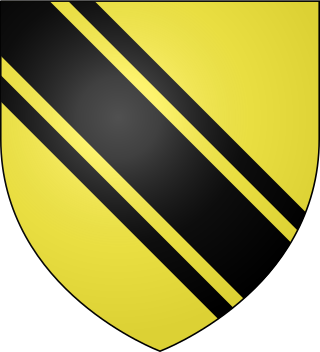
Edward Harley, 5th Earl of Oxford and Earl Mortimer was an English peer.
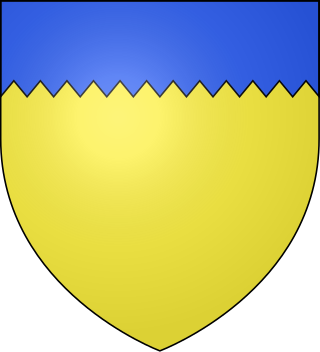
Butler is the name of a noble family whose members were, for several centuries, prominent in the administration of the Lordship of Ireland and the Kingdom of Ireland. They rose to their highest prominence as Dukes of Ormonde. The family has produced multiple titles such as Baron Cahir, Baron Dunboyne, Viscount Ikerrin, Viscount Galmoye, Viscount Mountgarret, Viscount Thurles, Earl of Carrick, Earl of Kilkenny, Earl of Ormond, Earl of Ossory, Marquess of Ormonde and Duke of Ormonde. Variant spellings of the name include le Boteler and le Botiller. The Butlers were descendants of Anglo-Norman lords who participated in the Norman invasion of Ireland in the 12th century. The surname has its origins in the hereditary office of "Butler (cup-bearer) of Ireland", originating with Theobald Walter, 1st Chief Butler of Ireland. The arms of later family members depicted three cups in recognition of their original office.

Holme Hall is a grade II* listed 18th-century country house in Holme-on-Spalding-Moor, East Riding of Yorkshire, England. It was then a Sue Ryder Care Home until its closure in February 2018.

